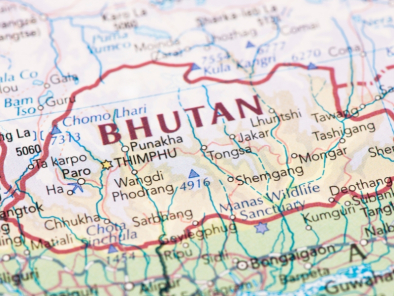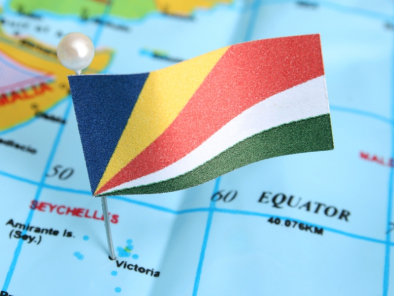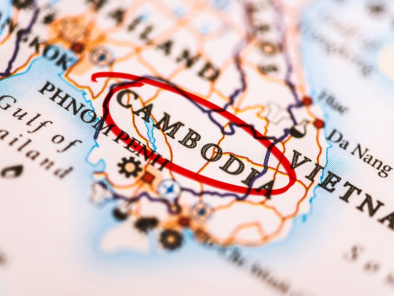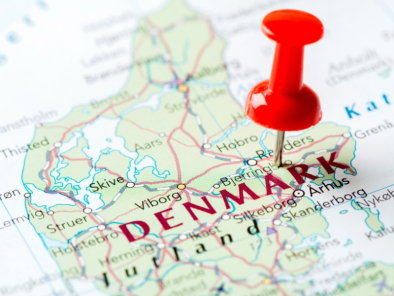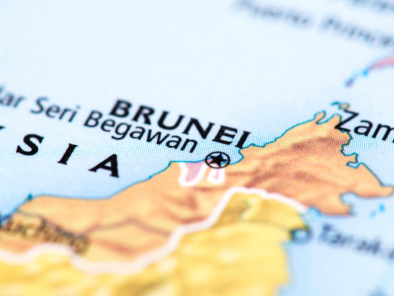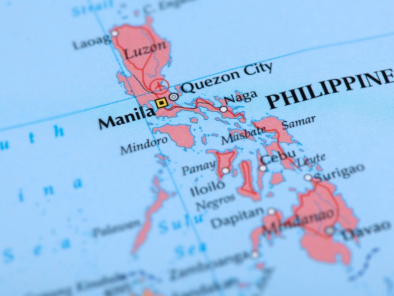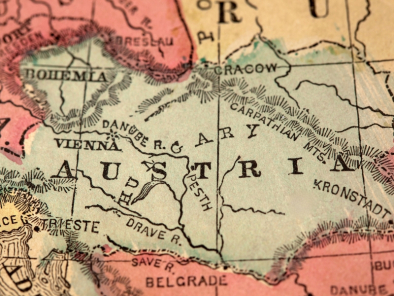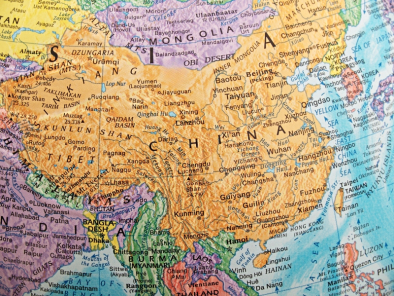
Posted by: Leo travel hub
Indonesia,
the world’s largest archipelago with over 17,000 islands, offers a rich
tapestry of cultures, landscapes, and adventures. From Bali’s beaches to Java’s
ancient temples, it’s a dream destination for Leo Travel Hub clients
seeking luxury, spirituality, or adventure. Below is a comprehensive guide
covering currency, power sockets, local cities and attractions, clothing, visa
requirements, and other essential travel tips.
Currency
- Official
Currency: Indonesian Rupiah (IDR or Rp), denoted by
the "Rp" symbol.
- Cash
Recommendations:
- Carry
small denominations (IDR 10,000, 20,000, 50,000) for street vendors,
markets, and rural areas where cards are rarely accepted.
- US
Dollars (USD) are accepted in tourist hubs like Bali or Jakarta but must
be in pristine condition (no tears or marks). Exchange for IDR for better
rates.
- Maximum
cash limit: Declare amounts exceeding IDR 100 million (~USD 6,500) or
equivalent at entry to comply with customs regulations.
- Payment
Options:
- Credit
Cards: Visa and Mastercard are widely accepted in
hotels, restaurants, and malls in Jakarta, Bali, and Yogyakarta. Smaller
establishments may charge a 3–5% fee or accept cash only. American
Express is less common.
- ATMs:
Available in urban areas (Jakarta, Denpasar, Surabaya) and tourist hubs.
Banks like BNI, Mandiri, and BCA offer reliable ATMs, but foreign card
withdrawals may incur fees (IDR 25,000–50,000 per transaction). Rural
islands like Flores have limited ATMs, so carry sufficient cash.
- Digital
Payments: Apps like GoPay or OVO are popular locally
but less practical for tourists. Stick to cash or cards.
- Exchange:
- Exchange
currency at authorized money changers (look for “PVA Berizin” signs) in
Bali, Jakarta, or airports for competitive rates. Avoid street vendors
due to scam risks (e.g., miscounting or fake notes).
- Banks
and hotels offer exchange but at lower rates. Check for “no commission”
changers in Bali’s Kuta or Ubud.
- Tip:
Spend all IDR before leaving, as it’s not widely convertible outside Indonesia.
Keep small notes as souvenirs.
Power Sockets
- Voltage:
230 volts, 50 Hz.
- Socket
Types:
Type C (Europlug, two round pins) and Type F (Schuko, two round pins with
grounding). Type G (UK-style) is rare but found in some upscale hotels.
- Recommendations:
- Bring
a universal adapter for Type C/F sockets, as not all accommodations
provide them. Most hotels in Bali and Jakarta cater to international
plugs.
- Power
outages are common in rural areas and smaller islands (e.g., Lombok,
Flores). Carry a portable charger for electronics.
- Major
resorts and urban hotels have backup generators, but budget
accommodations may not.
- Note:
Use surge protectors for sensitive devices, as voltage fluctuations can
occur in remote areas.
Local Cities and Attractions
Indonesia’s
diverse islands offer urban vibrancy, cultural heritage, and natural wonders.
Below are key destinations and their top attractions:
- Jakarta
(Capital, Java)
- Attractions:
- National
Monument (Monas): A 132-meter obelisk symbolizing
independence, with a museum and observation deck (Entry: ~IDR 15,000).
- Kota
Tua (Old Town): Colonial Dutch architecture, museums like
Fatahillah, and vibrant street food.
- Grand
Indonesia Mall: Luxury shopping and dining in a modern
urban hub.
- Istiqlal
Mosque & Jakarta Cathedral:
Adjacent landmarks showcasing religious harmony.
- Why
Visit: Jakarta is Indonesia’s bustling economic
and cultural center, ideal for history buffs and urban explorers.
- Yogyakarta
(Central Java)
- Attractions:
- Borobudur
Temple: A 9th-century Buddhist UNESCO site, best
at sunrise (Entry: ~IDR 450,000).
- Prambanan
Temple: A Hindu UNESCO complex with intricate
carvings (Entry: ~IDR 400,000).
- Malioboro
Street: A lively market for batik, souvenirs, and
street food.
- Kraton
Palace: The Sultan’s residence, showcasing Javanese
culture (Entry: ~IDR 25,000).
- Why
Visit: Yogyakarta is Java’s cultural heart,
offering temples, arts, and traditional performances like Ramayana
ballet.
- Bali
(Lesser Sunda Islands)
- Attractions:
- Ubud:
Cultural hub with the Monkey Forest, Tegalalang Rice Terraces, and art
markets.
- Tanah
Lot & Uluwatu Temples: Iconic sea temples with
stunning sunset views (Entry: ~IDR 60,000 each).
- Seminyak
& Kuta: Vibrant beaches, nightlife, and luxury
resorts.
- Nusa
Penida: Pristine beaches like Kelingking and
snorkeling with manta rays.
- Why
Visit: Bali blends spirituality, luxury, and
adventure, perfect for all Leo Travel Hub audiences.
- Surabaya
(East Java)
- Attractions:
- House
of Sampoerna: A museum on Indonesia’s kretek cigarette
industry with free tours.
- Submarine
Monument (Monkasel): Explore a decommissioned Soviet submarine
(Entry: ~IDR 15,000).
- Surabaya
Old Town: Historic Arab and Chinese quarters with
vibrant markets.
- Mount
Bromo: A nearby active volcano for sunrise treks
(Entry: ~IDR 320,000).
- Why
Visit: Surabaya is a gateway to East Java’s
volcanic landscapes and colonial history.
- Lombok
(Lesser Sunda Islands)
- Attractions:
- Gili
Islands: Three car-free islands (Trawangan, Meno,
Air) for snorkeling, diving, and beach parties.
- Mount
Rinjani: A challenging trek to a crater lake and
hot springs (guided tours recommended).
- Kuta
Lombok: Pristine beaches like Tanjung Aan, less
crowded than Bali.
- Sade
Village: Traditional Sasak cultural experience.
- Why
Visit: Lombok offers a quieter alternative to Bali
with adventure and authentic culture.
- Flores
(East Nusa Tenggara)
- Attractions:
- Komodo
National Park: Home to Komodo dragons and world-class
diving (Entry: ~IDR 150,000).
- Kelmutu
Volcano: Tri-colored crater lakes that change hues.
- Labuan
Bajo: A coastal town and gateway to Komodo boat
tours.
- Why
Visit: Flores is ideal for eco-conscious
adventurers seeking offbeat experiences.
- Bandung
(West Java)
- Attractions:
- Tangkuban
Perahu Volcano: A scenic crater with hiking trails (Entry:
~IDR 200,000).
- Kawah
Putih: A turquoise volcanic lake in Ciwidey.
- Factory
Outlets: Affordable fashion shopping on Jalan Riau.
- Why
Visit: Bandung’s cool climate and blend of nature
and urban charm attract families and millennials.
- Travel
Tip:
Book inter-island travel (flights, ferries, or liveaboard boats) through Leo
Travel Hub (+91 905 234 3030) or operators like Garuda Indonesia or
Pelni for seamless connections to Bali, Lombok, or Flores.
Clothing
- General
Guidelines: Indonesia’s tropical climate and diverse
cultural norms require lightweight, modest clothing, especially in
religious or rural areas.
- Recommended
Attire:
- Daytime:
Breathable cotton or linen shirts, shorts, and dresses for urban and
beach areas like Bali or Jakarta. Swimwear with cover-ups (sarongs or
T-shirts) for beaches.
- Religious
Sites: Long pants or skirts and shoulder-covering
tops for temples (e.g., Borobudur, Uluwatu) and mosques (e.g., Istiqlal).
Carry a scarf or shawl for quick cover-ups.
- Trekking:
Lightweight trekking pants, moisture-wicking shirts, and sturdy hiking
boots for Mount Bromo or Rinjani. Merino wool socks and a hat for sun
protection.
- Urban
Areas: Smart-casual attire (collared shirts,
dresses) for dining in Jakarta or Bali’s upscale venues.
- Water
Activities: Rash guards, board shorts, and water shoes
for diving or snorkeling in Komodo or Gili Islands.
- Accessories:
- Wide-brimmed
hat, sunglasses, and SPF 50+ sunscreen for intense UV exposure.
- Lightweight
rain jacket or poncho for sudden showers, especially in the wet season.
- Seasonal
Tips:
- Dry
Season (April–October): Cooler (22–32°C), ideal for light clothing.
Pack a light sweater for evenings in Ubud or Bandung.
- Wet
Season (November–March): Hotter (25–34°C), humid, with frequent
rain. Pack quick-dry clothing, waterproof bags, and umbrellas.
- Cultural
Note:
Indonesia is predominantly Muslim, especially outside Bali
(Hindu-majority). Dress conservatively in Java, Sumatra, or rural areas to
respect local customs. Avoid revealing clothing like tank tops or short
shorts in villages.
Visa and Entry Requirements
- Visa:
- Visa
on Arrival (VOA): Available for citizens of over 90
countries, including the USA, Canada, UK, Australia, India, and most EU
nations, for stays up to 30 days (extendable once for 30 more days).
Cost: IDR 500,000 (~USD 35), payable in cash or card at major entry points.
- Visa-Free
Entry: Nationals of ASEAN countries (e.g.,
Singapore, Malaysia) and a few others can enter visa-free for 30 days
(non-extendable). Check the Indonesian Immigration website for the full
list.
- Electronic
Visa (e-Visa): Required for non-VOA-eligible countries or
stays exceeding 60 days. Apply online via the Molina Immigration portal
at least 7 days in advance. Cost: Varies (~USD 50–150).
- Requirements:
- Passport
valid for at least 6 months beyond entry.
- Proof
of onward/return ticket.
- Proof
of accommodation (e.g., Leo Travel Hub booking confirmation).
- Sufficient
funds (e.g., bank statement, though rarely checked).
- Indian
Nationals: Eligible for VOA (30 days, extendable).
Carry a passport valid for 6+ months.
- Customs
Regulations:
- Declare
electronics (e.g., drones, professional cameras) valued over USD 1,500 to
avoid taxes.
- Alcohol
limit: 1 liter per adult. Tobacco limit: 200 cigarettes or 50 cigars.
- Prohibited
items: Drugs, firearms, pornography, and Chinese medicines.
- Entry
Points:
- Air: Soekarno-Hatta
International Airport (Jakarta), Ngurah Rai International Airport (Bali),
Juanda International Airport (Surabaya).
- Sea:
Major ports like Tanjung Priok (Jakarta) and Benoa (Bali) for cruises.
- Tip:
Purchase VOA at designated counters before immigration queues. Pre-arrange
airport transfers with Leo Travel Hub (+91 77 99 00 6591) to avoid
overpriced taxis (IDR 100,000–200,000 in Bali).
Other Important Points to Take Care Of
- Local
Etiquette:
- Cultural
Sensitivity: Respect Indonesia’s diverse religious
practices (Islam, Hinduism, Christianity). Avoid public displays of
affection, especially in Muslim-majority areas like Java.
- Temple
Etiquette: Wear a sarong and sash (often provided) at
Balinese temples. Remove shoes and avoid pointing feet at sacred objects.
- Greetings:
Use “Selamat Pagi” (good morning) or “Apa Kabar” (how are you) to connect
with locals. Handshakes are common but light. Avoid using the left hand
for giving/receiving items.
- Photography:
Ask permission before photographing locals, especially in villages or
during ceremonies. Photography in temples may be restricted—check with
guides.
- Health
and Safety:
- Water:
Drink bottled water (e.g., Aqua, widely available). Avoid tap water and
ice in street food stalls.
- Food:
Try local dishes like nasi goreng (fried rice), rendang (spicy beef), or
sate lilit (Balinese fish skewers). Be cautious with raw or undercooked
street food to avoid Bali Belly (traveler’s diarrhea).
- Sun
and Mosquitoes: Use SPF 50+ sunscreen and DEET-based
repellent, as dengue fever is a risk, especially in the wet season.
- Medical
Supplies: Carry medications (e.g., anti-diarrhea,
antihistamines) as pharmacies are limited outside Jakarta/Bali. Clinics
are available in tourist areas; hospitals are in Jakarta, Surabaya, and
Denpasar. Travel insurance with medical evacuation is recommended.
- Safety:
Indonesia is generally safe, but petty theft (pickpocketing,
bag-snatching) occurs in Bali’s Kuta or Jakarta’s markets. Secure
valuables and avoid flashing cash. Be cautious of motorbike scams in Bali
(e.g., fake rental damage claims).
- Transportation:
- Inter-Island
Travel:
- Flights:
Garuda Indonesia, Lion Air, and AirAsia connect Jakarta, Bali,
Yogyakarta, and smaller islands like Flores (IDR 500,000–2,000,000).
- Ferries:
PELNI or fast boats (e.g., Bali to Gili Islands, IDR 200,000–500,000)
serve coastal routes.
- Liveaboards:
Luxury cruises to Komodo or Raja Ampat, bookable via Leo Travel Hub.
- On-Island:
- Taxis/Apps:
Blue Bird taxis or apps like Gojek and Grab are reliable in Jakarta,
Bali, and Yogyakarta (IDR 7,000/km). Avoid unofficial taxis.
- Motorbike
Rentals: Common in Bali (IDR 70,000–150,000/day).
Wear helmets, carry an international driving permit, and beware of
traffic.
- Buses:
Affordable for Java (IDR 50,000–200,000) but less comfortable for long
routes.
- Tip:
Book domestic flights early, as prices surge during peak seasons
(July–August, December).
- Shopping
and Souvenirs:
- Recommended
Items: Batik textiles, silver jewelry (Bali), wood
carvings (Ubud), and luwak coffee. Avoid coral or endangered animal
products, as export is illegal.
- Markets:
Ubud Art Market, Malioboro (Yogyakarta), and Pasar Baru (Jakarta) for
crafts. Bargaining is expected—start at 50% of the quoted price.
- Duty-Free:
Available at major airports for alcohol, cosmetics, and electronics, but
local markets are better for souvenirs.
- Connectivity:
- SIM
Cards: Purchase a Telkomsel or XL Axiata SIM at
airports or convenience stores (IDR 50,000–100,000 for 10GB, valid 30
days). Top-ups are easy at minimarts like Indomaret.
- Wi-Fi:
Free in hotels, cafes, and resorts in Bali/Jakarta but unreliable in
rural areas like Flores. Mobile data is faster and more consistent.
- Tip:
Download offline maps (e.g., Maps.me) for navigation in remote areas like
Lombok or Komodo.
- Tipping:
- Not
mandatory but appreciated in tourist areas. Tip 5–10% (IDR 10,000–50,000)
for excellent service in restaurants or for guides/drivers. Many Bali
restaurants include a 10–15% service charge—check bills. Tip porters IDR
10,000–20,000 per bag.
- Photography:
- Outdoor
photography is unrestricted, but temple or village ceremonies may require
permission. Drones need a permit from the Indonesian Directorate General
of Civil Aviation.
- Use
waterproof gear for underwater photography in Komodo or Gili Islands.
- Festivals
and Events:
- Nyepi
(Balinese New Year, March/April): A day of silence in Bali;
stay indoors and avoid travel. Book accommodations early.
- Galungan
and Kuningan (Bali, varies): Hindu festivals with
temple ceremonies and street decorations.
- Eid
al-Fitr (nationwide, varies): Celebrated widely,
especially in Java, with markets and feasts.
- Tip:
Plan festival visits with Leo Travel Hub (+91 905 234 3030) for
guided cultural experiences.
- Sustainable
Tourism:
- Support
eco-friendly operators (e.g., Komodo National Park guides) and avoid
activities harming wildlife, like dolphin shows.
- Use
reef-safe sunscreen and reusable water bottles to protect Indonesia’s
coral reefs and reduce plastic waste.
- Engage
with local communities through homestays or craft workshops in Bali or
Lombok for authentic experiences.
- Best
Time to Visit:
- Dry
Season (April–October): Cooler (22–32°C), ideal for diving,
trekking, and temple visits. Peak season (July–August) requires early
bookings.
- Wet
Season (November–March): Hotter (25–34°C), with frequent rain but
fewer crowds. Best for budget travel and lush landscapes.
- Note:
Monsoon affects remote islands like Flores more than Bali. Avoid peak
rainy months (January–February) for outdoor activities.
Final Tips
- Stay Flexible: Weather or traffic
(especially in Jakarta) can cause delays. Build buffer days for
inter-island travel.
- Immerse
Locally: Join a Balinese dance class, try a batik
workshop, or attend a village ceremony to connect with Indonesia’s
culture.
- Pack
Smart:
Include a dry bag for water activities, insect repellent, and a small
first-aid kit. A universal power strip is handy for charging multiple
devices.
Indonesia’s
vibrant diversity, from Java’s temples to Flores’ dragons, promises
unforgettable adventures. By respecting local customs and preparing
thoughtfully, you’ll experience the archipelago’s magic. For bookings or expert
guidance, reach out for personalized itineraries, contact Leo Travel Hub
at +91 905 234 3030 or +91 77 99 00 6591


